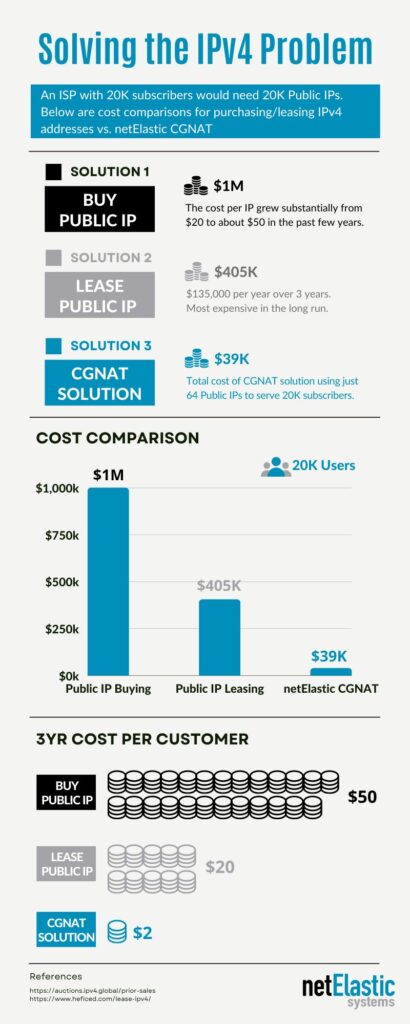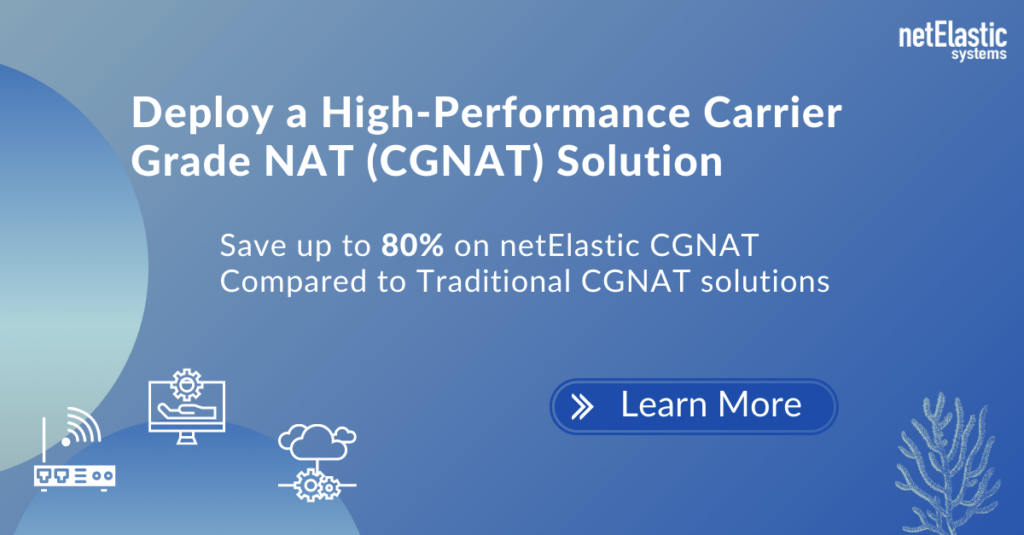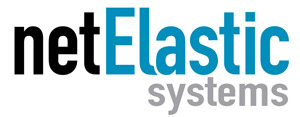Countries worldwide are allocating millions, and in some cases, billions of dollars for broadband expansion. And the vast majority of this money will be spent deploying fiber.
Deploying fiber may be the biggest expense, but it’s certainly not the only expense. Signing up new subscribers requires new IPv4 addresses, and they’re not cheap.
Today, these prices range from $40 to $50 per address. So, let’s do the math:
Let’s assume a broadband provider needs 1,000 IPv4 addresses at an average cost of $45. That’s a total cost of $45,000. If that same provider needs 5,000 IPv4 addresses, that’s $225,000. For 20,000 IPv4 addresses, the cost would be $900,000.
After a brief period of lower prices in 2023, experts predict IPv4 addresses will be scarce in 2024. Basic economics tell us that lower supply and increased demand lead to higher prices, which is what we can expect for IPv4 prices.

For large Tier 1 carriers, this may be a cost of doing business. However, for small and regional broadband providers, these high prices may slow down their ability to sign up new subscribers. This is an obstacle that needs to be overcome.
Overcoming High Costs
One option is carrier-grade network address translation (CGNAT). The main goal of Network Address Translation (NAT) is to save public addresses. By sharing a public IP address among many private IP addresses, NAT limits the number of public IP addresses an organization uses, conserving its IPv4 addresses. Of course, this also reduces costs. Cost savings have also been the main driver behind the growth of CGNAT.
But Do I Really Need CGNAT?
It all depends on your current pool of IPv4 addresses and your future growth plans. How many new subscribers will you add in the next three years? In the next five years? You’re probably fine if you have enough IPv4 addresses to meet your future growth plans. If you don’t have enough IPv4 addresses to meet future growth, then CGNAT can help.
What about IPv6? Won’t that eventually replace IPv4? Yes, but it will probably take a long time. IPv6 was created almost twenty-five years ago, but according to Google, only 41% of users access Google over IPv6. And much of the Internet is still only reachable by IPv4. So, the wait for IPv6 will likely continue for quite some time.
For the growing number of broadband providers that have decided to deploy CGNAT, the question becomes, which CGNAT solution should I choose?
Focus on Your Needs
No CGNAT solution in the market meets the needs of all broadband providers since all broadband providers are different. Your specific situation and requirements should drive your CGNAT selection.
For large Tier 1 carriers with large budgets, CGNAT solutions from traditional CGNAT vendors may be the best choice. These CGNAT offerings have the highest translation performance and typically have the most features. Many of these fully loaded CGNAT solutions have been built to accommodate the specific requirements of large carriers. Of course, these fully loaded CGNAT solutions also have the highest prices.
Small and regional broadband providers may not need the same CGNAT feature set as large carriers, nor can they afford to pay for features they don’t need. netElastic CGNAT was built for small and regional ISPs.
An Affordable CGNAT
netElastic CGNAT is a cost-effective alternative. Traditional CGNAT solutions run on expensive proprietary hardware. In contrast, netElastic CGNAT runs on commodity x86-based servers. As a result, broadband providers have saved up to 80% by switching to netElastic.

netElastic’s high-performance virtual router technology is at the heart of its CGNAT, and it includes a scalable software architecture that delivers high translation performance.
Using DPDK and advanced packet processing, netElastic CGNAT can achieve near line-rate throughput on 10G, 25G, 40G, and 100G interfaces. It’s also highly scalable (scales by cores) and can deliver performance over 360 Gbps per server. netElastic also supports up to 60,000 subscribers and 12 million NAT sessions.
For service providers looking for an economical CGNAT, netElastic delivers unparalleled value with industry-leading price/performance. To learn more, please read the white paper: Can Implementing CGNAT be Easy and Affordable?


